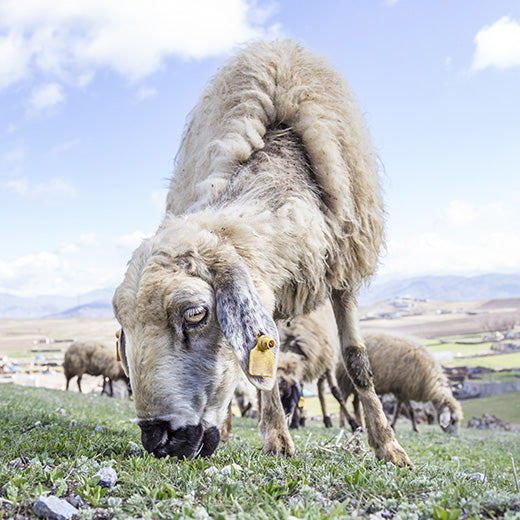Functionality of Merino Wool

Functionality of Merino Wool
Merino wool is a miracle fiber. Its highly valued functional properties by outdoor enthusiasts - especially its high wearing comfort, regulation of body climate, and odor-resistant characteristics - are solely based on the structure of the Merino fibers. These fibers are very fine, soft, strongly crimped, scaly, and elastic.
***
What is Merino Wool?
The term "Merino" refers to a specific breed of sheep, originally from North Africa. In the Middle Ages, the first Merino sheep arrived in Spain and from there, in the late 18th century, with Spanish settlers, to Australia and New Zealand. These two countries are by far the largest exporters of Merino wool today, followed by South Africa and Argentina.
Merino sheep are shorn every 8-10 months and produce - depending on the breed and breeding - between 2 and 4 kilograms of wool per sheep per year.
Merino Wool Offers High Wearing Comfort
Merino wool is known for its high wearing comfort and the fact that it does not itch like regular wool. The reason for this lies in the very fine fibers. Merino wool has an average fiber diameter of 16.5 to 24 microns (= micrometers = thousandths of a millimeter). For comparison: Human hair has a diameter of about 30 microns.
"Normal" sheep's wool is about twice as thick as Merino wool. The very fine Merino fibers do not stand on the wearer's skin, which means that Merino wool does not itch.
Merino Wool Insulates Well Against Cold and Heat
Merino fibers are strongly crimped and can have up to forty crimps per centimeter. As a result, the individual fibers lie relatively loosely on top of each other in a fabric, and air is trapped in the resulting gaps. This trapped air is excellent insulation against cold and heat.
Due to the many waves of Merino wool, there are also fewer contact points between the fabric and the skin, resulting in less heat being dissipated from the body.
Merino Wool Regulates Moisture and Body Temperature
Merino wool can absorb up to 30% of its dry weight in moisture without feeling wet. The Merino fibers can bind moisture in the form of water vapor and thus move moisture away from the skin. The moisture is stored in or between the fibers while the fiber surface remains dry.
When moisture evaporates in warm temperatures, it creates cooling evaporation cold. This makes wearing Merino clothing very comfortable even in summer.
Merino Wool Warms When Moist
Even in cold temperatures, the ability of Merino fibers to absorb moisture proves to be very positive. While the water vapor is bound inside the fiber, the fiber surface remains dry and repels water. A dry feeling is an important prerequisite for high wearing comfort.
Merino fibers also generate heat through a process called exothermic process when they absorb moisture (so-called absorption heat). This process continues until the fibers are saturated and can no longer absorb water molecules.
Merino Wool Neutralizes Odors
Another relatively well-known property of Merino wool is its odor-neutralizing effect. Wool fibers have a scaly surface on which bacteria responsible for the formation of foul odors have difficulty adhering. In addition, the fiber protein of wool, called keratin, breaks down bacteria on the skin. Fewer bacteria = less odor.
Merino Wool Cleans Itself
Merino wool has a built-in self-cleaning function. The interior of the wool fiber consists of two different types of cells that can absorb different amounts of moisture. As a result, the two types of cells swell to different extents when they absorb moisture, causing a mechanical friction process. Through this friction process, the Merino fiber can clean itself, especially in humid weather. This is why Merino clothing does not need to be washed as often as "normal" clothing and can be worn for a long time.







Leave a comment